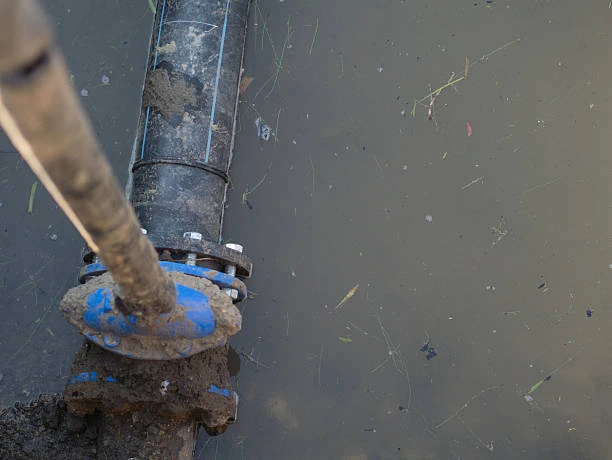The HDPE pipe market is poised for significant growth in the coming years, with an expected increase of USD 6.13 billion from 2024 to 2028. This growth is primarily driven by the rising demand for reliable water supply systems across various sectors, including residential, commercial, and industrial applications. Among the critical components that enhance the performance of HDPE pipes are pipe press fittings. This article will explore the HDPE pipes market, focusing on the factors driving demand and the role of pipe press fittings in improving water supply infrastructure.

Understanding HDPE Pipe
What are HDPE Pipe?
HDPE (High-Density Polyethylene) pipes are known for their strength, flexibility, and resistance to corrosion. They are commonly used in various applications, including:
- Water distribution
- Gas distribution
- Sewage systems
- Industrial applications
Key Benefits of HDPE Pipe
- Durability: HDPE pipes can withstand harsh environmental conditions, making them ideal for both above-ground and underground installations.
- Lightweight: Their lightweight nature allows for easy handling and installation, reducing labor costs and time.
- Corrosion Resistance: Unlike metal pipes, HDPE pipes are resistant to corrosion, ensuring a longer lifespan and lower maintenance costs.
- Cost-Effectiveness: Due to their durability and low maintenance requirements, HDPE pipes can be a more cost-effective option over time.
HDPE pipe Factors Driving Market Growth
1. HDPE pipes Increasing Demand for Water Supply
One of the most significant factors driving the growth of the HDPE pipes market is the increasing demand for reliable water supply systems. As urban populations continue to rise, the need for efficient and sustainable water distribution networks becomes more pressing.
2. Infrastructure Development
Governments worldwide are investing in infrastructure development to improve water supply systems. This includes the replacement of aging pipes and the expansion of water distribution networks, which directly boosts the demand for HDPE pipes.
3. Environmental Concerns
With growing awareness of environmental issues, there is an increased focus on sustainable materials. HDPE pipes, being recyclable and eco-friendly, are becoming the preferred choice for water supply projects.
4. Technological Advancements
Innovations in pipe manufacturing and installation techniques are enhancing the performance of HDPE pipes. For instance, the development of pipe press fittings allows for quicker and more secure connections, further driving market growth.
The Role of HDPE pipe Press Fittings in HDPE Systems
What are HDPE pipes ?
HDPE pipe are mechanical connectors used to join HDPE pipes. They create a secure and leak-proof seal without the need for welding or threading, streamlining the installation process.
Benefits of Using HDPE pipes Press Fittings
- Quick Installation: Pipe press fittings significantly reduce installation time, allowing for faster project completion.
- Reliable Connections: The design of these fittings ensures a leak-proof connection, minimizing the risk of water loss.
- Versatility: They can be use in various applications, from residential plumbing to large-scale industrial projects.
- Cost Savings: By simplifying installation and reducing labor costs, pipe press fittings can contribute to overall project savings.
Market Analysis and Forecast
Current Market Trends
As of 2024, the global HDPE pipes market is experiencing robust growth due to the factors discussed above. The increasing demand for water supply and ongoing infrastructure development are key drivers. According to Technavio, the market is projecte to grow by USD 6.13 billion from 2024 to 2028.
Regional Insights
- North America: The region is witnessing significant investments in water infrastructure, driving demand for HDPE pipes.
- Asia-Pacific: Rapid urbanization and population growth are propelling the market in this region, making it a key player in HDPE pipes consumption.
- Europe: Environmental regulations and sustainable practices are leading to increased adoption of HDPE pipes for water supply systems.
Conclusion
The HDPE pipes market is set for remarkable growth, fueled by the rising demand for water supply systems and infrastructure development. The introduction of advanced technologies, including pipes press fittings, enhances the efficiency and reliability of HDPE pipes installations. As the market continues to expand, stakeholders must stay informed about trends and innovations to leverage opportunities in this dynamic sector.
FAQs
1. What are HDPE pipes?
HDPE pipes are high-density polyethylene pipes know for their strength, flexibility, and resistance to corrosion, widely used in water distribution and industrial applications.
2. How do pipe press fittings work?
Pipe press fittings are connectors that join HDPE pipes without welding, providing a leak-proof seal through mechanical pressing.
3. What are the advantages of using HDPE pipe?
Advantages of HDPE pipes include durability, lightweight nature, corrosion resistance, and cost-effectiveness due to low maintenance needs.
4. What factors are driving the growth of the HDPE pipes market?
Key factors include increasing demand for water supply, infrastructure development, environmental concerns, and technological advancements.
5. How do HDPE pipe fittings contribute to cost savings?
By reducing installation time and labor costs, pipe press fittings make the installation process more efficient, leading to overall project savings.


















